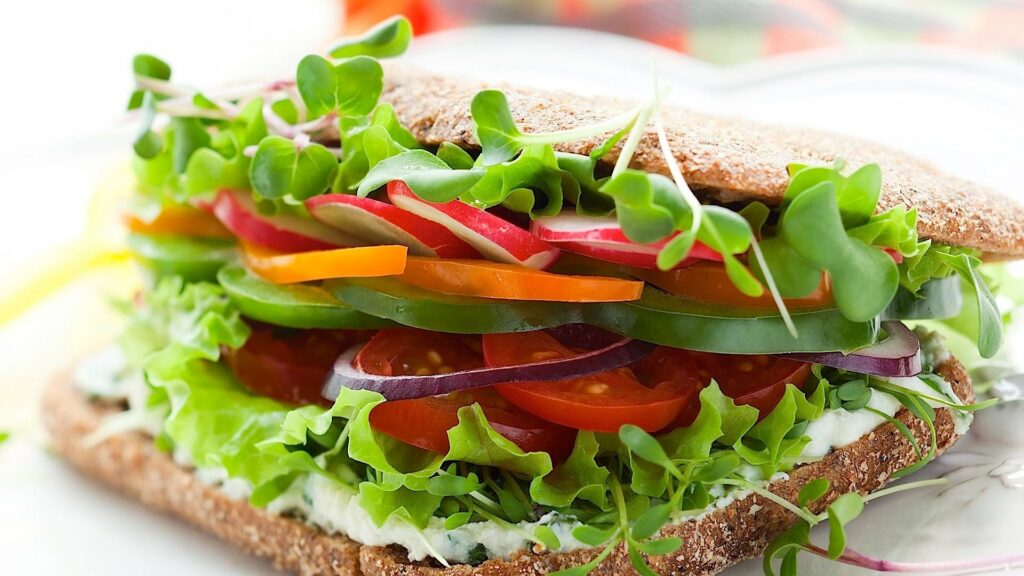Introduction:
A fiber-rich diet is crucial for maintaining a healthy digestive system and overall well-being. Fiber is a type of carbohydrate found in plant-based foods that the body cannot digest fully. Instead, it passes through the digestive system relatively intact, providing numerous health benefits. This comprehensive guide will delve into the importance of fiber, how it positively impacts your gut health, and practical tips to incorporate more fiber into your daily diet.
Section 1: Understanding Fiber and Its Types
- Fiber can be classified into two categories: soluble and insoluble fiber. Soluble fiber dissolves in water and forms a gel-like substance in the digestive tract, while insoluble fiber adds bulk to the stool. Both types of fiber are beneficial for various aspects of gut health.
Section 2: The Benefits of a Fiber-Rich Diet
- 2.1 Improved Digestion: Fiber adds bulk to the stool, preventing constipation and promoting regular bowel movements. It also helps in maintaining a healthy weight and reducing the risk of hemorrhoids.
- 2.2 Gut Microbiota Health: Fiber acts as a prebiotic, providing nourishment for beneficial gut bacteria. This promotes a diverse and balanced gut microbiota, which is essential for proper digestion, immune function, and mental health.
- 2.3 Reduced Risk of Chronic Diseases: A fiber-rich diet has been associated with a lower risk of developing chronic conditions such as heart disease, type 2 diabetes, and certain types of cancer. Fiber helps regulate blood sugar levels and cholesterol, which contributes to overall cardiovascular health.
- 2.4 Weight Management: High-fiber foods are often low in calories and provide a feeling of fullness. This can aid in weight management by reducing calorie intake and preventing overeating.
Section 3: How to Increase Fiber Intake
- 3.1 Choose Whole Grains: Opt for whole grain bread, pasta, and cereals instead of refined grains. Whole grains retain the bran and germ, which are rich in fiber and other essential nutrients.
- 3.2 Incorporate Legumes: Legumes, such as lentils, chickpeas, and beans, are excellent sources of fiber. Add them to soups, stews, salads, or make delicious bean-based dishes like hummus.
- 3.3 Consume Fruits and Vegetables: Fruits and vegetables are naturally high in fiber. Aim to include a variety of colorful options in your meals and snacks. Leave the skin on whenever possible to maximize fiber content.
- 3.4 Snack on Nuts and Seeds: Almonds, chia seeds, flaxseeds, and other nuts and seeds are great sources of fiber and healthy fats. Enjoy them as a snack or sprinkle them onto salads, yogurt, or oatmeal.
- 3.5 Be Mindful of Fiber Supplements: While it’s best to obtain fiber from whole foods, supplements can be useful for individuals struggling to meet their daily requirements. Consult with a healthcare professional before starting any supplements.
Section 4: Increasing Fiber Intake Gradually
- When increasing fiber intake, it is essential to do so gradually to allow your body to adjust. Sudden, significant changes may lead to digestive discomfort, bloating, or gas. Start by adding small portions of fiber-rich foods to your meals and gradually increase the amount over time. Additionally, ensure you stay hydrated by drinking an adequate amount of water, as fiber absorbs water in the digestive tract.
Section 5: Tips for Incorporating Fiber into Meals
- 5.1 Fiber-Packed Breakfast: Start your day with a high-fiber breakfast by enjoying a bowl of oatmeal topped with berries and a sprinkle of flaxseeds or adding whole grain toast with avocado and sliced vegetables.
- 5.2 Fiber-Rich Lunch and Dinner: Include a variety of vegetables, legumes, and whole grains in your main meals. For example, prepare a colorful stir-fry with plenty of veggies, tofu, and brown rice.
- 5.3 Smart Snacking: Opt for fiber-rich snacks like carrot sticks with hummus, a handful of nuts and seeds, or whole fruit. Avoid highly processed, low-fiber snacks.
- 5.4 Experiment with Recipes: Explore recipes that incorporate fiber-rich ingredients creatively. For instance, prepare zucchini noodles instead of traditional pasta or make a quinoa and black bean salad.
Conclusion:
A fiber-rich diet plays a crucial role in maintaining a healthy gut and overall well-being. By incorporating more fiber into your daily meals, you can experience improved digestion, promote a healthy gut microbiota, reduce the risk of chronic diseases, and manage your weight effectively. Remember to increase your fiber intake gradually and choose a variety of whole foods to maximize the benefits. With a little planning and creativity, you can easily enjoy a delicious and fiber-packed diet that supports your gut health and enhances your overall quality of life.
- A Refreshing Journey: My Personal Review of Melo THC Beverages - May 16, 2024
- Exploring the Top Vape Mods A Comprehensive Review By Vape Sourcing - April 18, 2024
- Benefits of Chondroitin Supplements - March 30, 2024

